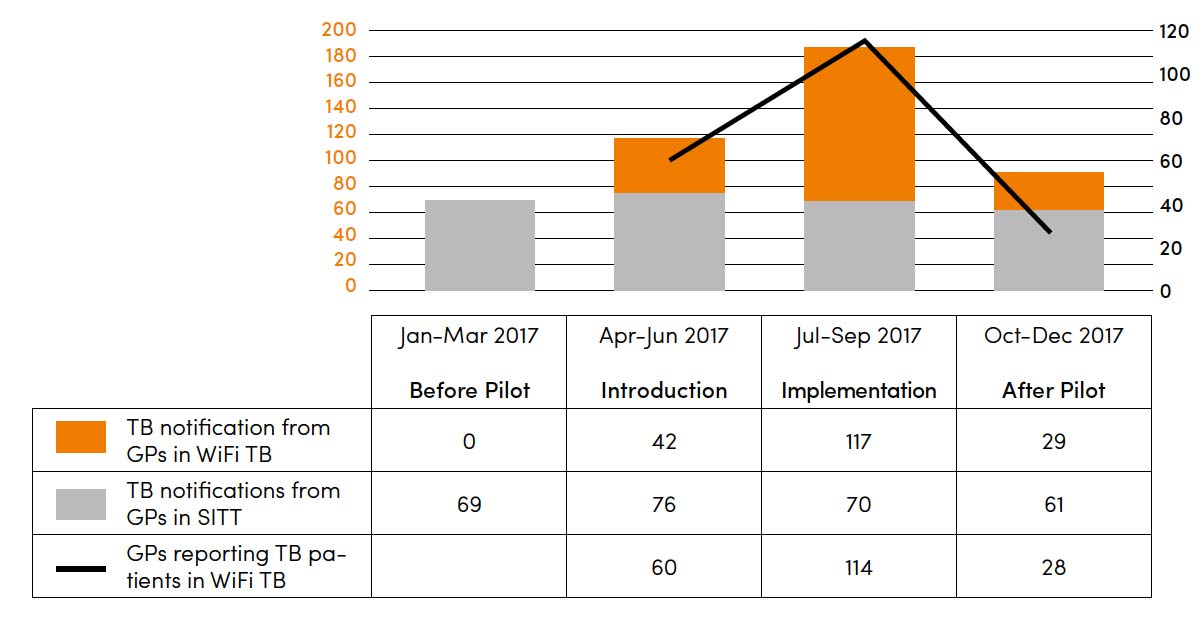-
1. Introduction
-
2. Translating data into action: essential components of a TB recording and reporting system
-
3. Designing an optimal information system
-
4. Recommended process of development
-
5. Resource requirements
-
6. Measuring the impact of the information system
-
References
2.1 Notification systems
Notification is a key requirement for understanding the size of the TB epidemic in a country or region. Notification to the NTP means that every time an individual is confirmed as having TB, the government is informed. In countries where the private sector occupies a large portion of the health care space, it is important that private providers also notify cases to the NTP. In many countries (e.g. India, Indonesia, Myanmar), TB is legally notifiable, which means that providers are mandated by law to report counts of confirmed TB cases to the NTP. However, in practice, many private providers may not report TB because it is cumbersome and there is no incentive for them to take on the task. Engaging with the private sector to drive notification of TB cases is a complex issue described in detail in the field guide in this series dedicated to the topic.
One of the key challenges with notification for both private and public providers is determining what information needs to be communicated to the NTP. Given that notification is an added task for care providers, it is important to resist the temptation to ask for too much data. The dataset requested from providers should contain the bare minimum number of variables needed to generate meaningful reports.
Unique patient identifiers(UPI; please see Box 2 for definition), addressed in more detail in later sections, are of crucial importance for notification because a patient may visit more than one private provider and end up being reported in the system twice. The use of UPIs allows users to identify data duplication, correct patient counts, and connect lab data to treatment and notification. Enabling private providers to use UPIs expands the NTP’s insight into where patients are being diagnosed and treated.
Use of UPI’s has been implemented by India’s NIKSHAY system and also in the online TB notification system developed in Indonesia by the USAID-funded Challenge TB initiative. Aside from providing insight into the size of local TB epidemics, notification systems also ensure tracking of diagnosed patients and their enrolment into treatment and care. For this reason, it is important that notification systems collect contact information such as phone numbers and home addresses (with appropriate security mechanisms built in to protect patients’ privacy) in order to facilitate patient follow-up.
An electronic notification system can be conceptualized as a simple mobile app like WiFi TB (8) (please see Figure 3). General practitioners (GPs) can register in the system and then report cases on a regular basis. Some constraints related to mobile apps are that they require smartphones and data connectivity, which may not be available to all private providers. Notification can also be done from mobile phones using a structured SMS message that is sent to a phone number linked to an NTP-operated server that can understand the message and translate it into a case report. As with general information systems for TB, notifications should also ideally be linked to a reporting system or dashboard so that incoming data can be effectively monitored.

